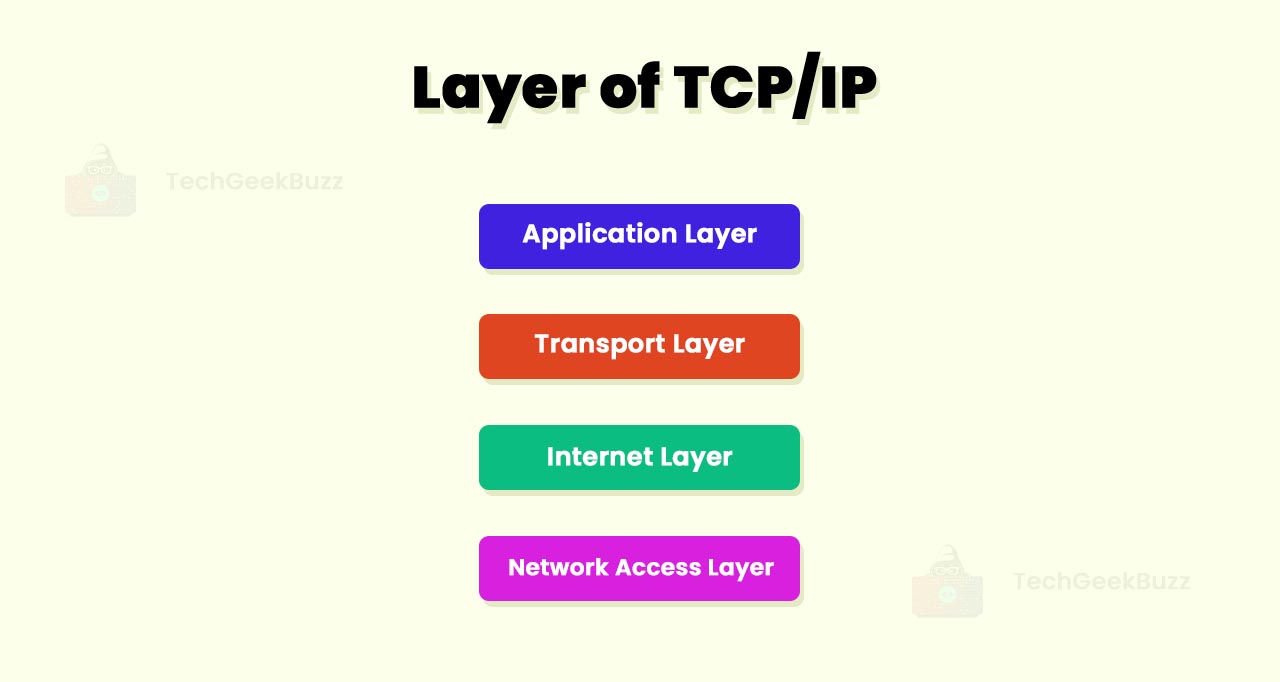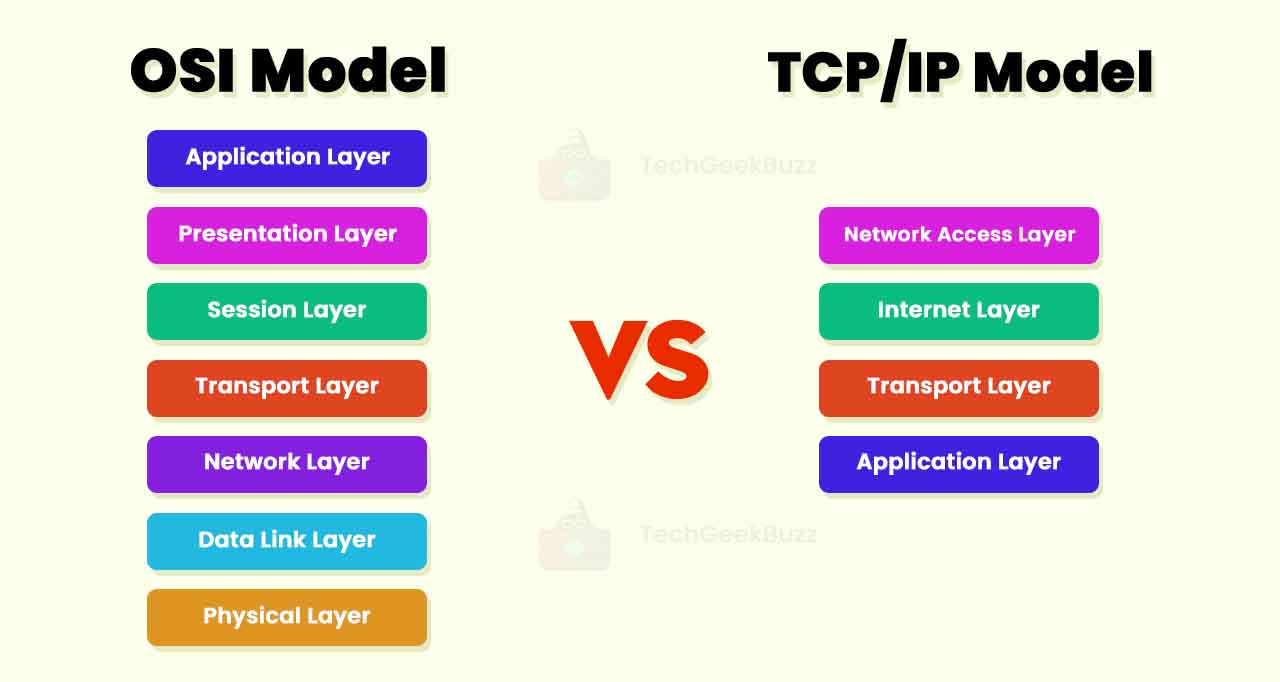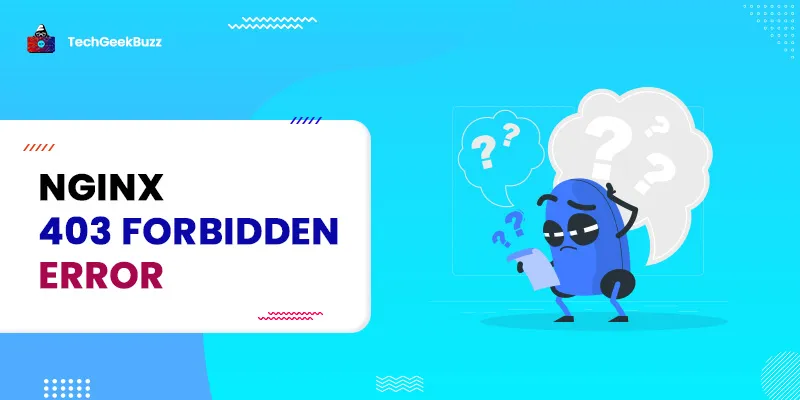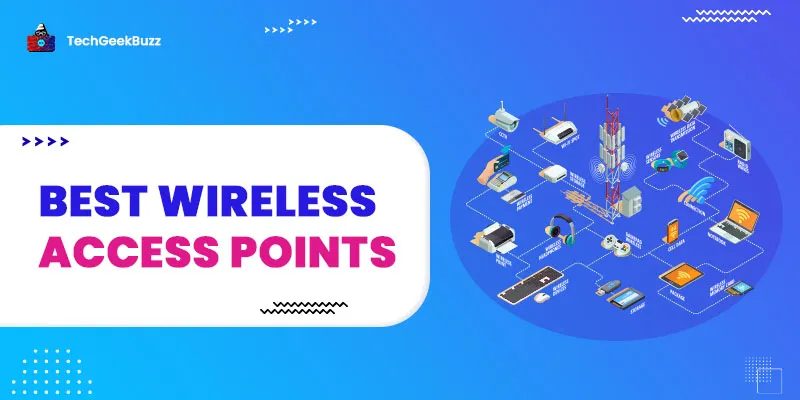Have you ever wondered how the data gets transmitted from one device to another over a network? Or how does an email you send from one location, say California, to a person living at a long distance, say Paris, reach in seconds? The reason behind this fast communication between any two devices over a network is TCP/IP.
TCP/IP stands for Transmission Control Protocol/Internet Protocol. The TCP/IP model is a combination of communication protocols that the internet or other similar networks leverage to facilitate communication over large distances. It is based on its predecessor, i.e., the Open Systems Interconnection (OSI) model.
In this blog post, we shall familiarize you with the TCP/IP model and its different layers.
So, let us start our discussion!
What is TCP/IP Model?
The TCP/IP model, also known as the internet protocol suite, is a suite of communications protocols, which primarily includes TCP and IP protocols. The primary use of the TCP/IP model is to interconnect network devices on the internet and facilitate communication among them. It also includes other communication protocols, such as User Datagram Protocol (UDP), along with TCP and IP.
Earlier, it was pretty challenging for computer systems from one vendor to transmit data to computer systems from other vendors over a network. This is because each vendor has its own set of rules, called protocols, for communication. However, the advent of the TCP/IP model overcame this issue.
TCP/IP allows a computer from a particular vendor to exchange data with a computer from any other vendor over a network. Data transfer becomes possible when all the computer devices use a common protocol. Otherwise, it creates chaos.
History and Development of TCP/IP
During the 1960s, the Defense Advanced Research Projects Agency (DARPA) developed the TCP/IP model. The following are some significant events that led to the popularity of TCP/IP:
- In 1975, there were two-network TCP/IP communication tests between Stanford and University College London.
- The US Department of Defense, in March 1982, declared TCP/IP as the standard communication protocol for all their military computer networking .
- A year later, ARPANET adopted this model as a standard communication protocol.
- In 1989, the University of California also declared TCP/IP as its standard protocol.
- Later, many IT companies, including IBM and DEC, adopted this model as their standard communication protocol.
TCP/IP then emerged as a standard communication protocol or a comprehensive framework for computer networking and internet communication across the world.
Features
The following are the salient features of the TCP/IP model:
- TCP/IP is a reliable communication protocol. Whenever the sender transmits a data packet to the receiver, the receiver responds with an acknowledgment that can be positive or negative. Therefore, the sender can know whether the data packet has reached its destination. If not, the sender will resend it.
- It ensures that the data reaches its destination in the same order the sender has sent it.
- It is connection-oriented, meaning that it requires establishing a connection between two remote points before the data transfer takes place.
- TCP/IP provides end-to-end communication.
- It also provides error-checking and recovery mechanisms.
- You can implement flow control with TCP/IP so that the receiver will not overload with the data the sender transmits.
- TCP operates in client-server point-to-point mode.
How Does TCP/IP Work?
Today, TCP/IP is the default communication protocol on the internet. The United States Department of Defense developed this model with the aim to enable the accurate and correct transfer of data between devices located far from each other.
Consider that a specific computer system wants to send a message to another remote system. If it sends the whole message in one go and encounters an issue while transmitting, it has to resend the whole message. Resending the whole message is not feasible.
The TCP/IP model breaks the whole message into small data packets. All these data packets get reassembled when they reach the destination. Each data packet takes an alternative way to reach the destination if a particular way is not available or congested.
Furthermore, the sender has to resend only those data packets that encountered an issue while transmitting rather than resending the whole message.
TCP/IP carries out the communication tasks in four layers. As a result, data packets have to go through four layers before reaching their destination. Each layer has its own function.
Since TCP/IP is connection-oriented, it maintains the connection between two systems until they finish data exchange.
The primary purpose of carrying out communication in layers is to standardize the process. It eliminates the need for various hardware and software vendors to manage the communication process on their own.
Advantages and Disadvantages of TCP/IP
Advantages
Here are some notable benefits of TCP/IP:
- This model allows you to establish a connection between different types of computer systems.
- It is interoperable, i.e., it supports communication among heterogeneous networks.
- It is a highly scalable client-server architecture.
- This model assigns the ID address to each computer system on the network. As a result, it becomes possible to uniquely identify each device over the network.
- It supports a wide range of routing protocols.
- It is an open communication protocol suite. Therefore, anyone can use TCP/IP.
Disadvantages
The following are some major pitfalls of TCP/IP:
- This model does not provide the distinction between services, protocols, and interfaces. Therefore, it would not be suitable to introduce any new technology in the network.
- Though the data link and physical layers have different functionalities, there is no separation of these layers in TCP/IP.
- It is not optimized for a local area network (LAN) and personal area network (PAN).
- This model is pretty complicated to set up.
- The transport layer of TCP/IP does not assure the delivery of data packets.
Layers of TCP/IP

Unlike its predecessor, i.e., the OSI model , the TCP/IP model consists of only four layers, namely Application, Transport, Internet, and Network Access. Each layer has its own function. Let us discuss each of these TCP/IP layers in detail below.
1. Network Access/Link Layer
The network access layer or link layer is the combination of the data link layer and physical layer of the OSI model. It is the bottom-most layer of the TCP/IP architecture.
At this layer, the physical transmission of data takes place. In addition, the mapping of IP addresses into physical addresses also takes place in this layer. However, the primary function of the Network Access/Link layer is to transmit data between two devices connected over the same network.
2. Internet Layer
On the top of the network access layer, there is the internet layer. This layer is parallel to the network layer of the OSI model. The primary function of this layer is to transmit data packets to their destination. Moreover, this layer involves the logical transmission of data.
This layer leverages three different protocols that are as follows:
-
- IP: IP stands for Internet Protocol. It detects the IP address of a device, which can later be utilized for internetwork connections. The primary function of this protocol is to transmit data packets from source to destination by using the IP addresses in the packet headers. Furthermore, there are two common versions of IP, namely IPv4 and IPv6 .
- ARP: ARP is an acronym for Address Resolution Protocol. The principal goal of ARP is to find the hardware address of the hosts through the known IP address. There are various types of ARP, including Proxy ARP, Reverse ARP, Inverse ARP, and Gratuitous ARP.
- ICMP: Internet Control Message Protocol is the full form of ICMP. Its primary goal is to notify the users about the issues associated with the network. However, it does not rectify those issues.
3. Transport/Host-to-Host Layer
The transport layer is above the internet layer in TCP/IP. It is parallel to the transport layer of the OSI model. The major function of this layer is to ensure end-to-end communication and deliver error-free data from the source to the destination.
Furthermore, there are two protocols in this layer that are as follows:
- TCP: Transmission Control Protocol (TCP) is an error-free and reliable communication protocol that ensures end-to-end communication between two hosts. Also, it performs sequencing and segmentation of data. It comes with the control flow mechanism that controls the flow of data between two systems. In addition, it provides the acknowledgment feature, i.e., the sender knows whether the data packets have reached the destination or not.
- UDP: User Datagram Protocol (UDP) is a cost-effective but less reliable protocol. Like TCP, UDP does not provide acknowledgment and control flow features. Moreover, it is a connectionless protocol and not connection-oriented like TCP.
4. Application/Process Layer
The topmost layer of TCP/IP is the application or process layer. This layer carries out the functions of the top three layers of the OSI model, namely the Application, Presentation, and Session layers. The primary responsibility of this layer is to ensure node-to-node communication and control user-interface specifications.
Moreover, this layer uses various protocols, as given below:
- HTTP/HTTPS: HTTP is an acronym for HyperText Transfer Protocol, while HTTPS is an acronym for HTTP-Secure. The World Wide Web (WWW) leverages the HTTP protocol to facilitate communication between web browsers and servers. On the other hand, HTTPS is the amalgamation of HTTP and SSH (Secure Shell). It protects the confidentiality and integrity of data being transmitted from the source to the destination over the network.
- SSH: SSH stands for Secure Shell. It is also known as Secure Socket Shell, which is a cryptographic network protocol that carries out network services over unsecured networks. The primary reason TCP/IP uses this protocol is its capability to maintain encrypted connections.
- NTP: NTP is an acronym for Network Time Protocol. This protocol synchronizes the system’s clock to time sources in a network. Also, it is very helpful in bank transactions.
- Telnet: Telnet stands for TErminaL NETwork. It enables one system to access a local computer virtually and provides two-way, text-based communication between them. The computer that starts the connection is the local computer, and the computer that accepts the connection is called the remote computer.
- FTP: File Transfer Protocol is the full form of FTP. It is a widespread communication protocol used for transferring files between the client and the server over a network.
Besides these protocols, there are many others, such as Network File System (NFS), Simple Mail Transfer Protocol (SMTP), and Trivial File Transfer Protocol (TFTP).
TCP/IP Model vs OSI Model
 The following table highlights the key differences between TCP/IP and OSI models:
The following table highlights the key differences between TCP/IP and OSI models:
|
TCP/IP |
OSI |
|
TCP/IP stands for Transmission Control Protocol/Internet Protocol. |
OSI stands for Open System Interconnection. |
|
The U.S. Department of Defense developed TCP/IP. |
The International Standard Organization (ISO) developed OSI. |
|
It has four layers that are as follows:
|
It has seven layers that are as follows:
|
|
This model follows a horizontal approach. |
This model follows a vertical approach. |
|
TCP/IP includes session and presentation layers in the application layer itself. |
Session and presentation layers in the OSI model are different. |
|
This model combines the data link layer and physical layer into a single layer called the host-to-host or transport layer. |
The data link layer and physical layer in the OSI model are separate. |
|
This model does not provide any distinction between services, interfaces, and protocols. |
This model provides a clear distinction between services, interfaces, and protocols. |
|
The transport layer in TCP/IP does not assure the delivery of data packets. But still, it is a reliable communication protocol. |
In the OSI model, the transport layer guarantees the delivery of data packets. |
|
In TCP/IP, the network layer provides only connectionless service. |
The network layer of OSI provides both connection-oriented and connectionless services. |
Conclusion
TCP/IP is the default communication protocol on the internet. It has the ability to establish connections between different types of computer systems. In addition, it supports various routing protocols and provides an acknowledgment feature and a control flow mechanism. It eliminates the need for various hardware and software vendors to manage the communication process on their own.
We have covered all the essential points in this article that one must know about TCP/IP. Feel free to post your queries in the comments section below, if any.
People are also reading:
![What is TCP/IP Model? [Definition, Working, & Layers]](/media/new_post_images/TCP_IP_Model.webp)




Leave a Comment on this Post